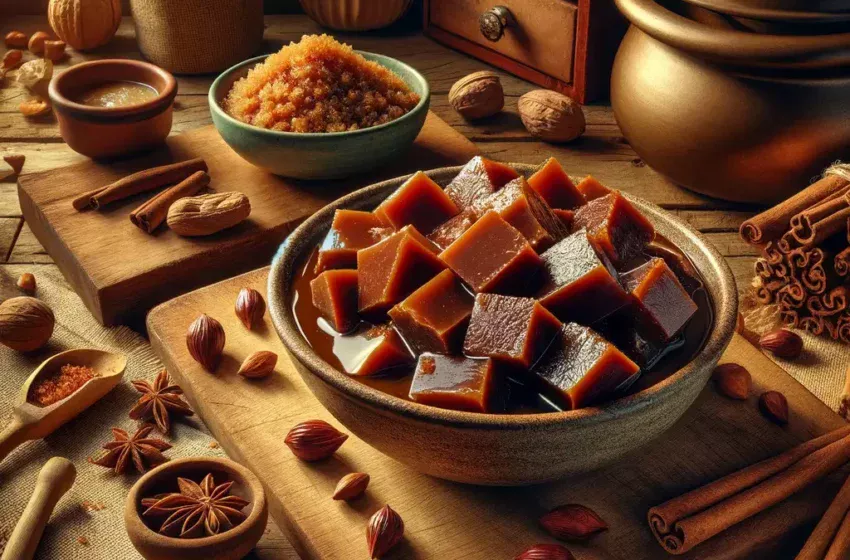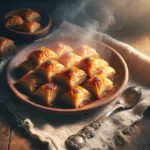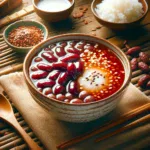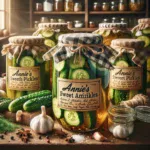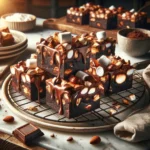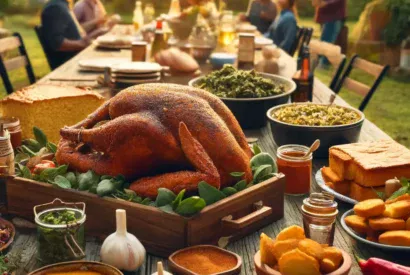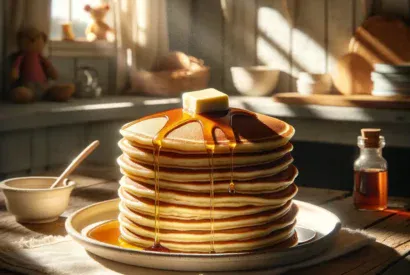As a food reviewer who has had the pleasure of tasting a myriad of sweet treats from around the globe, it’s rare to come across a dessert that strikes a perfect balance between tradition and simplicity. However, the traditional Panocha recipe, a beloved Mexican fudge made from piloncillo (unrefined cane sugar), is an exception. This delightful dessert, with its rustic charm and deep, molasses-like flavor, is a testament to the beauty of traditional Mexican cuisine. Below, I’ll guide you through the step-by-step process of making Panocha, including the elements you’ll need, pro tips, and reasons why this recipe is a must-try.
What is Panocha?
Panocha, also known as panela or piloncillo fudge, is a simple yet exquisite dessert originating from Mexico. It’s crafted from piloncillo, which imparts a unique, caramelized flavor unlike any other sweetener. Often enhanced with nuts and flavored with cinnamon, this fudge is not just a treat but a journey through the rich tapestry of Mexican culinary traditions.
Overview Of How To Make Panocha Recipe.
- Preparation Time
10 minutes - Cooking Time
30 minutes - Serves
8-10 people - Difficulty
Easy
Ingredients
- 1 cup of water
- 1 pound of piloncillo (or dark brown sugar as a substitute)
- 1 teaspoon ground cinnamon
- 1/2 teaspoon ground cloves (optional)
- 1 cup of chopped nuts (pecans or walnuts work best)
Step-by-Step Instructions
- Prepare the Piloncillo Syrup
Begin by combining the piloncillo and water in a large saucepan. Heat over medium flame, stirring occasionally, until the piloncillo has completely dissolved. This process introduces the base flavor of our Panocha. - Add Spices
Once the piloncillo has dissolved, stir in the ground cinnamon and cloves (if using). These spices will infuse the syrup with warmth and depth, adding layers to the dessert’s flavor profile. - Thicken the Mixture
Continue cooking the mixture on medium heat, stirring frequently, until it thickens and reduces by about half. This step is crucial for achieving the right consistency for the fudge. - Incorporate Nuts
After the mixture has thickened, remove it from the heat and stir in the chopped nuts. The nuts not only add a delightful crunch but also complement the deep flavors of the piloncillo and spices. - Set the Fudge
Pour the mixture into a greased pan or mold. Allow it to cool and set at room temperature. Once firm, cut into squares or shapes of your choice.
Pro Tips For Panocha Recipe.
- For a smoother texture, consider straining the syrup to remove any impurities before adding the nuts.
- Adjust the amount of water based on the humidity and your desired consistency. Less water results in a firmer fudge.
Why You Will Love This Recipe
The Traditional Panocha recipe is a celebration of simple ingredients coming together to create something truly magical. Its rich, molasses-like flavor, combined with the textural contrast of crunchy nuts, makes it a dessert that’s both comforting and sophisticated.
How to Eat
Panocha is best enjoyed at room temperature, allowing you to fully appreciate its texture and depth of flavor. Pair it with a cup of coffee or hot chocolate for a cozy treat.
Conclusion
Panocha is more than just a dessert; it’s a cultural experience. Its simplicity, paired with the rich flavors of piloncillo and spices, makes it a unique treat that’s sure to impress. Whether you’re new to Mexican cuisine or a seasoned aficionado, this Traditional Panocha recipe is a must-try. If you’ve enjoyed this recipe, please feel free to share it with your friends and family!
FAQs on Panocha Recipe
1. What is Panocha?
Panocha is a traditional Mexican dessert, a type of fudge made from piloncillo (unrefined cane sugar), flavored with cinnamon, and often contains nuts.
2. Can I use brown sugar instead of piloncillo?
Yes, dark brown sugar is a suitable substitute for piloncillo, offering a similar flavor profile.
3. Is Panocha gluten-free?
Yes, the traditional Panocha recipe is gluten-free, as it does not contain any wheat or flour products.
4. How do I store Panocha?
Store it in an airtight container at room temperature for up to a week or refrigerate for longer shelf life.
5. Can Panocha be frozen?
Yes, Panocha can be frozen. Wrap it tightly and freeze for up to 3 months. Thaw at room temperature before serving.
6. How long does it take to make Panocha?
The total time, including preparation and cooking, is about 40 minutes.
7. What nuts are best for Panocha?
Pecans or walnuts are traditionally used, but you can use your preferred nuts.
8. Is Panocha vegan?
Yes, since it’s made from piloncillo, water, spices, and nuts, it is inherently vegan.
9. Can I make Panocha without nuts?
Absolutely, you can omit the nuts if you prefer or are allergic to them.
10. What’s the best way to cut Panocha?
Use a sharp knife and dip it in hot water for clean cuts. Let the fudge cool completely before cutting.
11. Why is my Panocha too soft?
The syrup may not have been cooked long enough to reach the desired consistency. Cook it a bit longer next time.
12. Can I add chocolate to Panocha?
Yes, adding melted chocolate or cocoa powder will give it a chocolatey twist.
13. How can I tell when the mixture is ready?
The mixture thickens and reduces in volume by about half. It should coat the back of a spoon.
14. Can I make Panocha in advance?
Yes, Panocha can be made in advance and stored as directed above.
15. Why did my Panocha crystallize?
Crystallization can occur if the sugar syrup is stirred too frequently or vigorously. Minimize stirring once the sugar has dissolved.
16. Can I use honey instead of piloncillo?
Honey can be used for a different flavor profile, though it will alter the traditional taste.
17. Is Panocha suitable for diabetics?
Due to its high sugar content, it’s not recommended for diabetics.
18. Can I add fruits to Panocha?
Yes, dried fruits like raisins or cranberries can be added for extra flavor and texture.
19. How thick should the mixture be before setting?
It should be thick enough to leave a trail when a spoon is dragged through it.
20. What’s the difference between Panocha and regular fudge?
Panocha is made with piloncillo and flavored with spices, giving it a distinct taste and texture compared to regular fudge.
21. Can I use a sugar substitute in Panocha?
Substituting the piloncillo with sugar alternatives may affect the flavor and consistency.
22. What type of pan should I use to set the Panocha?
A square or rectangular baking dish works well, lightly greased to prevent sticking.
23. Can I add alcohol to the recipe?
Yes, a splash of rum or brandy can be added for an adult version.
24. How do I prevent the nuts from sinking to the bottom?
Add the nuts once the mixture has started to thicken to ensure even distribution.
25. Can I make Panocha with a sugar-free sweetener?
While possible, it may not yield the same texture or flavor as traditional Panocha.
26. Why is my Panocha grainy?
Graininess can result from not dissolving the piloncillo completely or from crystallization.
27. Can I reheat Panocha to adjust its consistency?
Yes, you can gently reheat it to soften or further reduce the mixture if needed.
28. How do I make Panocha spicier?
Increase the amount of cinnamon or add a pinch of cayenne pepper for extra heat.
29. Can I make Panocha without cinnamon?
Yes, but cinnamon adds to the traditional flavor. You can experiment with other spices.
30. How many people does this recipe serve?
The traditional Panocha recipe serves 8-10 people, depending on the cut size.

